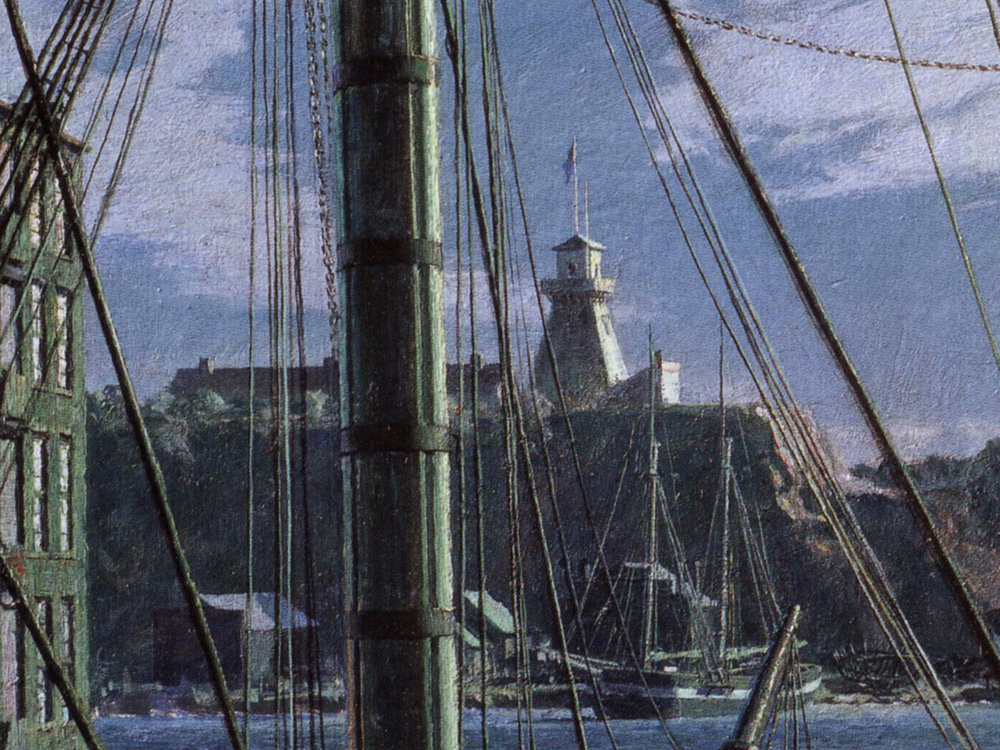Baltimore: Federal Hill and the Marine Observatory from Spear’s Wharf in 1872
$800.00 Original price was: $800.00.$720.00Current price is: $720.00.
Several days passage from the open ocean by sail, the port of Baltimore nestles along the banks of the Patapsco River estuary at the headwaters of Chesapeake Bay. Following the establishment of the colony of Maryland in the 17th century, the town was chartered as a “tobacco port” in 1729. It was late in the War of 1812, off Fort McHenry, which stands as a sentinel commanding the harbor entrance, that Francis Scott Key composed the Star Spangled Banner as he observed Britain’s unsuccessful waterborne siege of the city while being held captive on a commandeered sloop.
In the years following, the city boomed spectacularly, with the growth of industries and the expansion of trade between Southern states, the West Indies, South America and Europe adding to the volume of coastal tidewater business. It was in the latter part of the eighteenth century that a special merchant ship came into being which would become known as the Baltimore Clipper. The fastest vessels on the seas in those times, no two were exactly alike, but all were two masted tops’l schooners with gaff rigged sails, raked masts and a deep draft aft. With little freeboard they had a low, raldish look, and after the government had issued letters of marque allowing private vessels to harass British ships during the War of 1812, the vessels proved to be highly successful as privateers.
This view of Batimore’s bustling harbor from Spear’s Wharf, the very heart of the inner port, shows the characterful Marine Observatory on Federal Hill across the estuary, with evidence of the adjacent Revolutionary War earthworks still remaining. This prominent feature, commanding views in all directions from the fortifications, was the signal tower which alerted the city’s merchants as to the arrival of ships long before they reached their berths. I had long determined to show a typical assemblage of merchant sailing ships in port and was especially eager to include a Baltimore Clipper type. Both vessels at right center in this scene are newly arrived following a rain storm which has now abaited, some of their sails still too wet to stow away. Behind the wharfside buildings to the right is the end of the harbor, terminus for the sidewheel steam packets that were the principal mode of transportation for passengers to tidewater destinations and beyond.
In the left foreground a larger ship prepares for a new voyage, her jib-boom rigged inboard to allow the maximum space ahead for another vessel to berth, much of her gear aloft is in the process of being overhauled.
In the present day Baltimore’s National Aquarium would be located to our right. None of the buildings shown in this view have survived the ravages of the city’s expansion and modernization, yet today one can stand very close to this spot at ground level and observe the shape of Federal Hill still evident across the harbor.
Out of stock
| Weight | 6.00 lbs |
|---|---|
| Catalog: | Stobart-009 |
| Artist: | John Stobart |
| Dimensions: | 17 1/2" x 31" |
| Edition: | 950 |










